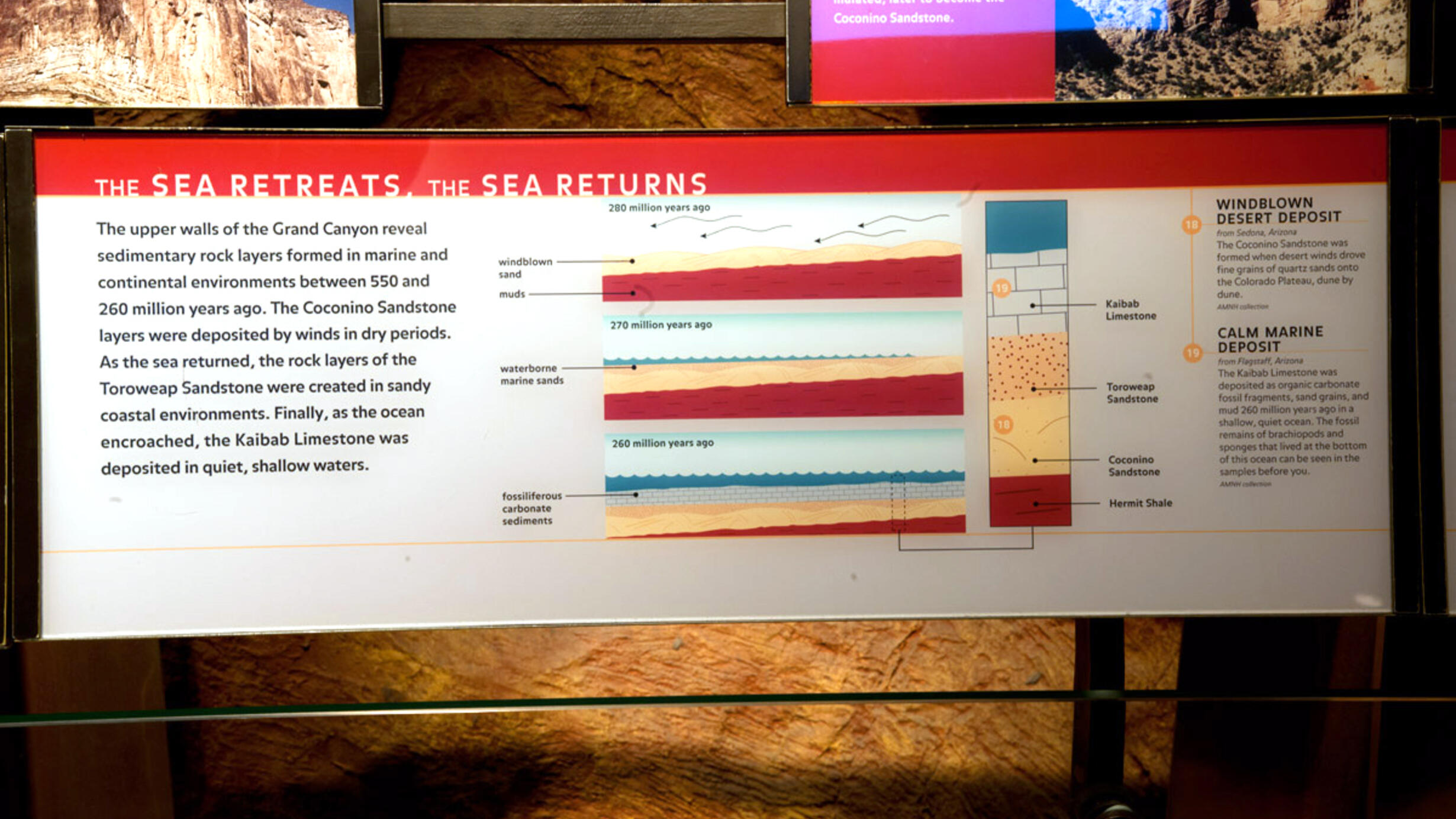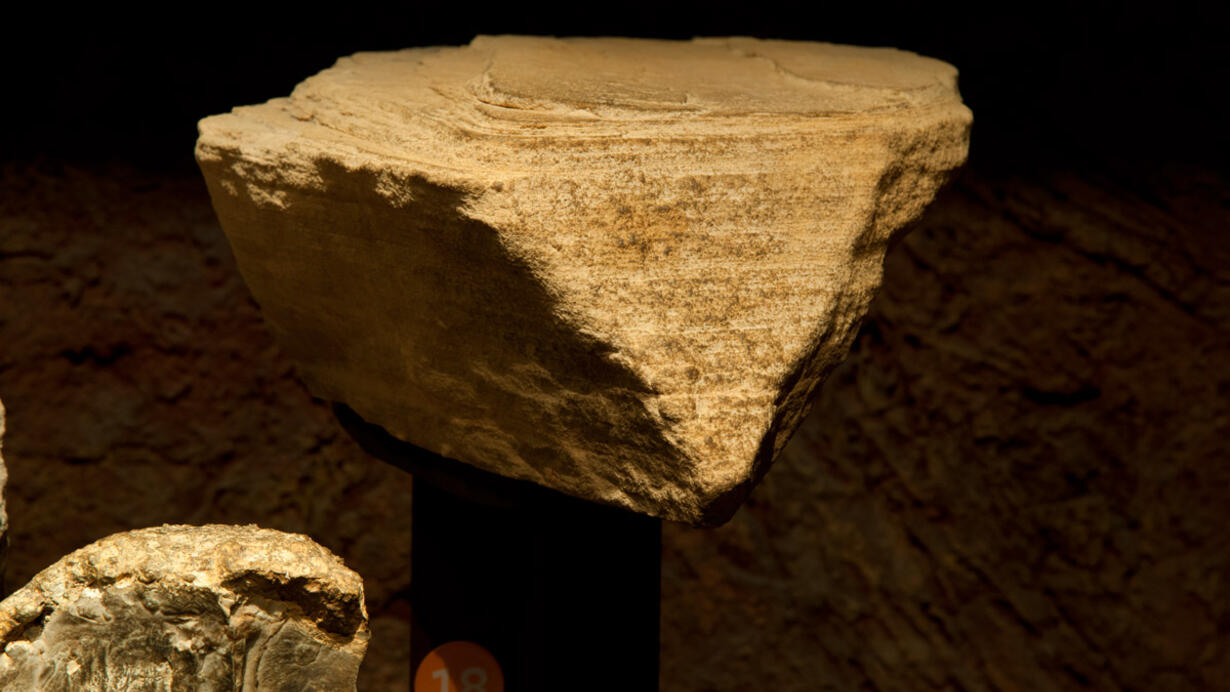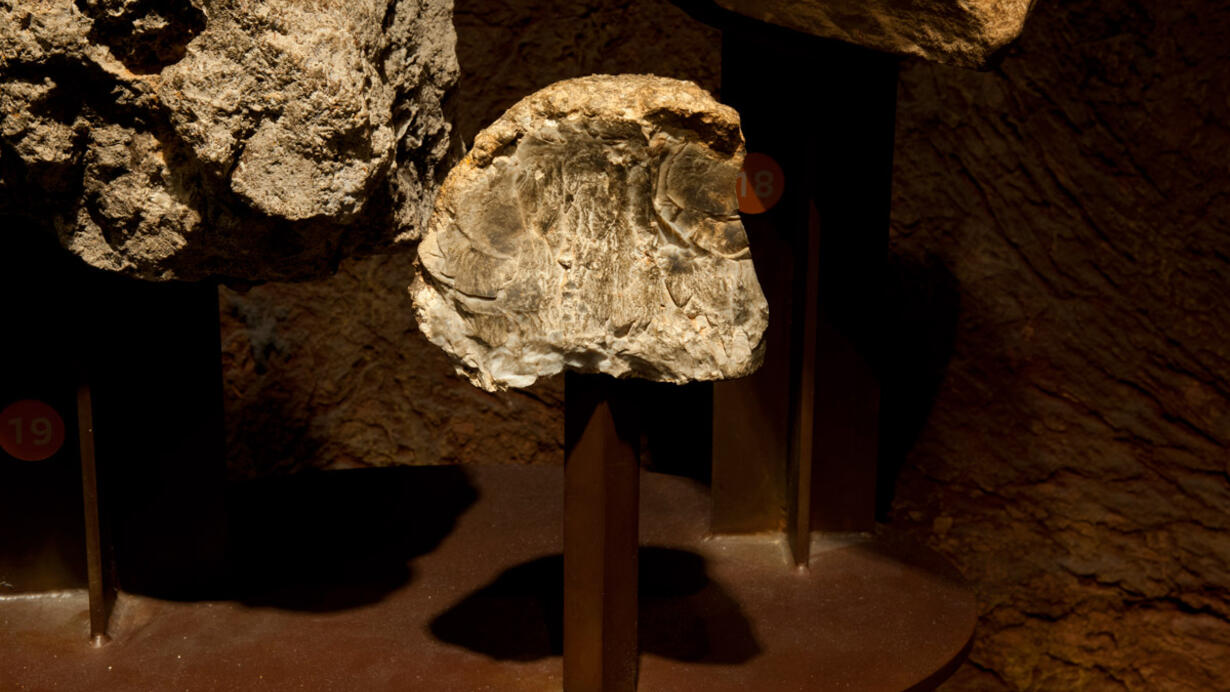The Sea Retreats, the Sea Returns
Part of Hall of Planet Earth.
 AMNH/R.Mickens
AMNH/R.Mickens The upper walls of the Grand Canyon reveal sedimentary rock layers formed in marine and continental environments between 550 and 260 million years ago. The Coconino Sandstone layers were deposited by winds in dry periods. As the sea returned, the rock layers of the Toroweap Sandstone were created in sandy coastal environments. Finally, as the ocean encroached, the Kaibab Limestone was deposited in quiet, shallow waters.
In This Section
 AMNH/R.Mickens
AMNH/R.Mickens Windblown Desert Deposit
The Coconino Sanstone was formed when desert winds drove fine grains of quartz sands onto the Colorado Plateau, dune by dune.
 AMNH/R.Mickens
AMNH/R.Mickens Calm Marine Deposit
The Kaibab Limestone was deposited as organic carbonate fossil fragments, sand grains, and mud 260 million years ago in a shallow, quiet ocean. The fossil remains of brachiopods and sponges that lived at the bottom of this ocean can be seen in the samples before you.